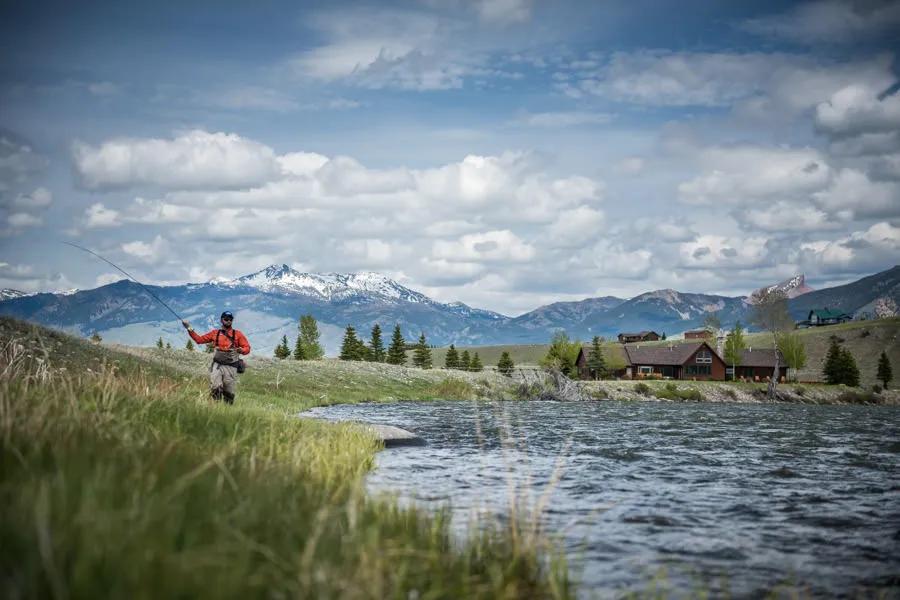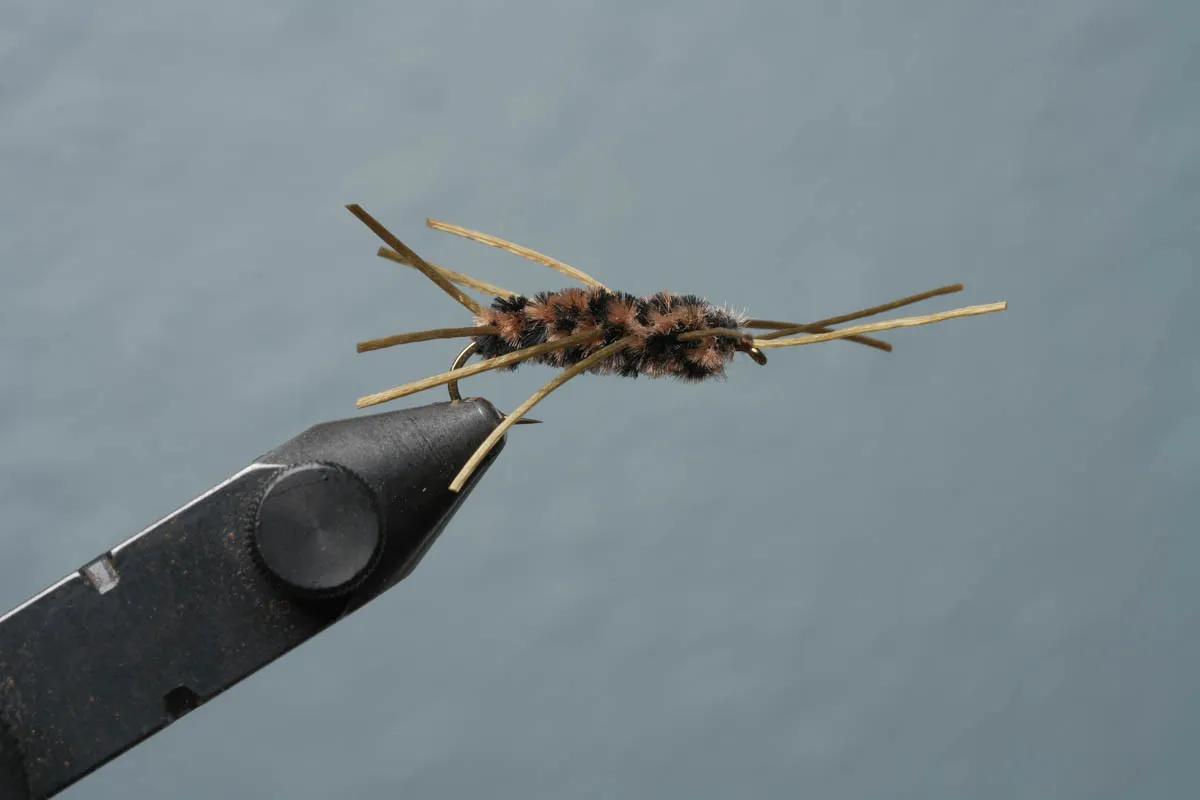
Spring fly fishing is some of the most anticipated of the year. Getting out of the winter hibernation mode is often an excuse enough to go fishing. For many anglers catching a fish is a bonus–the real success is just getting out on the water after another long winter. But, wouldn’t it be nice to also catch some fish while busting out of the winter doldrums?
The spring angling season kicks-off in March with a variety of hatches. First come the midges, then come Blue Winged Olives and March Browns. Sprinkle in some skwala stoneflies and then top it off with Mother’s Day caddis. When these hatches occur, the trout that swim in Montana’s best fly fishing rivers, lakes, and creeks are often gobbling up nymphs. Here are 5 Essential Nymphs for Spring Fly Fishing in Montana.

Pat's Rubber Legs/Girdle Bug/Crazy Legs. These are all variations of stonefly nymphs that consistently catch fish. These can be dead-drifted under an indicator as a nymph on its own or used as a lead fly in a two-fly setup. The rubber legs add life to the fly by flexing and pulsing in the current, and the chenille color can be varied to match any shade of stonefly. Black, brown, and variegated black-and-brown are also effective colors. This is a go-to fly for fishing weighted nymphs for most spring fly fishing trips in Montana.

Beadhead Zebra Midge. Although it has midge in its name, this fly can cover a lot of bases for spring fly fishing in Montana. Early in spring, midges can dominate the hatch activity, but that changes quickly by the middle or end of March. A beadhead Zebra is not just for imitating midges. This fly can be fished as a mayfly on the Paradise Valley spring creeks, as a caddis on the Madison River, and as scuds on the Missouri River. Many anglers fish Zebra midges as part of a two-fly deep nymphing rig when mayflies or caddis are hatching. Some anglers also use a Zebra midge as a dropper when fishing a Parachute mayfly pattern or one of the 5 Essential Dry Flies for Spring Fishing.

Fly Formerly Known as a Prince Nymph. With its genesis being the Prince Nymph, it is no mystery why this fly catches fish. The FKA Prince is one of those rare patterns that is much more effective than the original. Tied with Peacock herl, a flashy wing, and a beadhead, the FKA Prince has all the ingredients of a successful pattern. The only difference between this fly and the traditional prince nymph is the wing. A traditional prince uses goose biot for the wing, but the FKA Prince uses holographic tinsel. Fished to imitate stoneflies and caddis, many of our Montana fly fishing guides reach for this fly first when creating a two-fly nymph set-up for fly fishing in the spring.

Beadhead Pheasant Tail. The classic, time-tested mayfly nymph works just about anywhere, any day of the season, and for a variety of hatches. It is hard to beat a beadhead Pheasant Tail when you go fishing in Montana during spring. Tied to imitate a mayfly nymph, this traditional pattern is still a go-to for many local anglers and veteran Montana fly fishing guides. Whether you are planning to fish Blue Winged Olives on the Paradise Valley Spring Creeks or caddis during the Mother’s Day caddis hatch, having a selection of sizes of beadhead Pheasant Tail nymphs will ensure you are armed with the proper arrows in your quiver.

Aquatic worms and firebeads. Spring fly fishing in Montana means that many trout rivers see streamflows fluctuate more often than in summer or fall. With occasional spring rains and snowmelt runoff occurring, trout will be opportunistic feeders to the most available food source with the largest amount of protein. Enter aquatic and terrestrial worms and firebead nymphs. If a hatch is not occurring or a stream is on the rise or is on the dirty side of clarity, reach for worms or firebeads. Montana’s Smith River is a great example of a spring fishery where worms and firebeads are crucial. Because the Smith River often runs dirty compared to the Madison or Missouri Rivers, worms and firebeads are essential.
When rivers come into shape after the long winter, anglers in Montana are eager to chase a variety of spring hatches and get on the water. If a hatch isn’t occurring–or even during a strong hatch–fishing nymphs is crucial to catch fish. There are a variety of nymph patterns to choose from, but these 5 patterns should be in every anglers fly box for fly fishing in spring in Montana.
